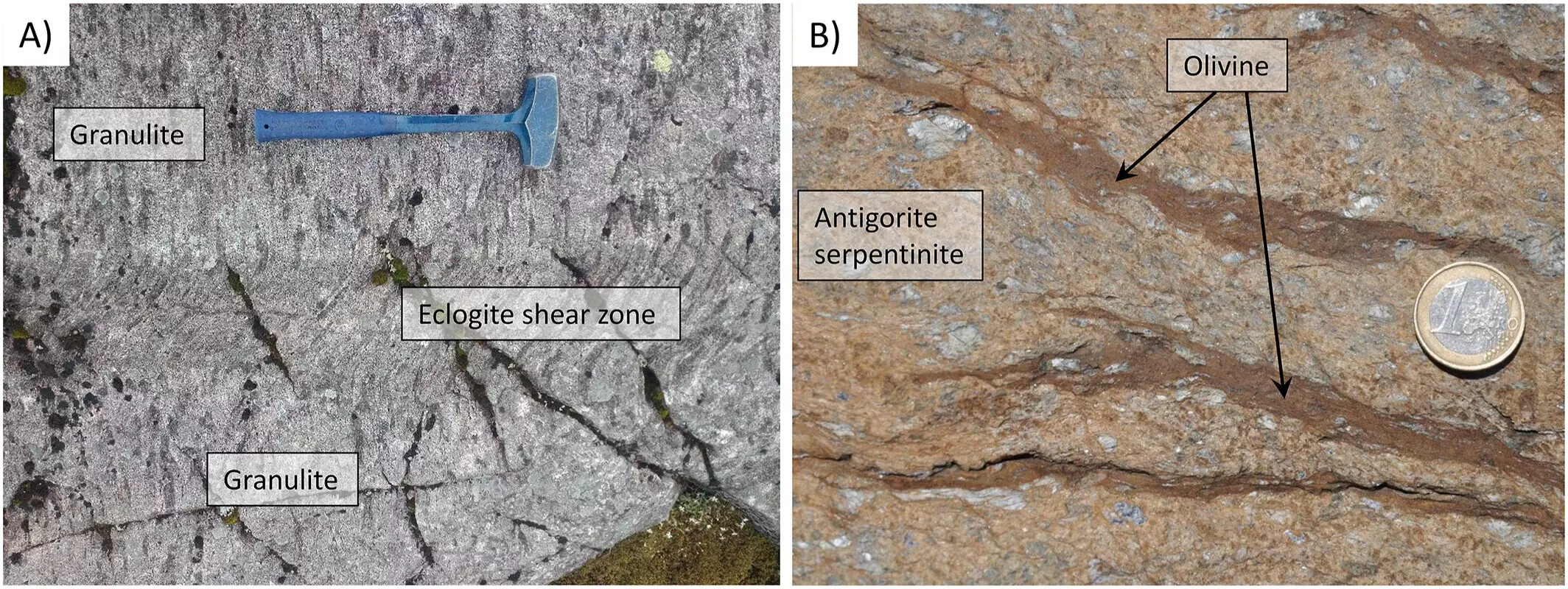Water, often associated with surface phenomena, plays a surprisingly significant role in the deep Earth. Beneath our feet, there is a constant cycle of water being absorbed and released by rocks, which has implications that extend far beyond mere hydration. The interplay between water and geological materials can lead to events like earthquakes, influencing not only local geophysical activities but also broader processes such as plate tectonics and continental drift over long geological timescales.
Researchers, including Schmalholz and his team, have delved into the complexities of how water interacts with impermeable rocks—those found in the mantle wedges, deep lithosphere, and lower crust. Their work raises a fascinating hypothesis: under specific conditions, reactions can temporarily create porosity in these otherwise non-porous materials. Utilizing advanced mathematical modeling, they explored how hydration and dehydration processes affect the porosity of deep Earth rocks subjected to high pressure. Their findings, published in the reputable journal Geochemistry, Geophysics, Geosystems, shed light on the subterranean dynamics that govern these interactions.
Previous geological studies have suggested that at extreme temperatures, minerals can undergo reactions that yield denser compounds, effectively pushing water out and resulting in less dense and momentarily porous rock formations. Through the transition of the “dehydration front” moving through the rock, scientists have been able to visualize this process. Conversely, certain reactions induce hydration fronts. In this scenario, the rocks behave like sponges, drawing in water and increasing their density. The researchers conducted one-dimensional simulations to illustrate these hydration and dehydration fronts under various conditions.
In the context of hydration, water flows into the rock from an external source, meaning that the hydration front consistently advances in the direction of the incoming fluid. Dehydration, on the other hand, exhibits more complexity with two distinct scenarios. In the first case, simple dehydration involves water escaping from the rock while the dehydration front advances in the opposite direction. The second scenario, known as dehydration inflow, describes a situation in which minerals release water, but additional external water flows in to occupy the newly formed porosity. This nuanced understanding demonstrates that regardless of the initial conditions, the shifting water dynamics can facilitate movement into surrounding impermeable rocks.
Understanding the movement of water within deep Earth formations is inherently challenging due to the sheer complexity of geological processes at play. However, the innovative equations developed by Schmalholz and his colleagues offer a promising framework for future researchers. Their work highlights how water is not just an external geological agent but a critical element that drives substantial geological events beneath the surface. By shedding light on the unpredictable behavior of water under high-pressure conditions, this research paves the way for a deeper comprehension of how geological processes shape our planet’s architecture over time.

